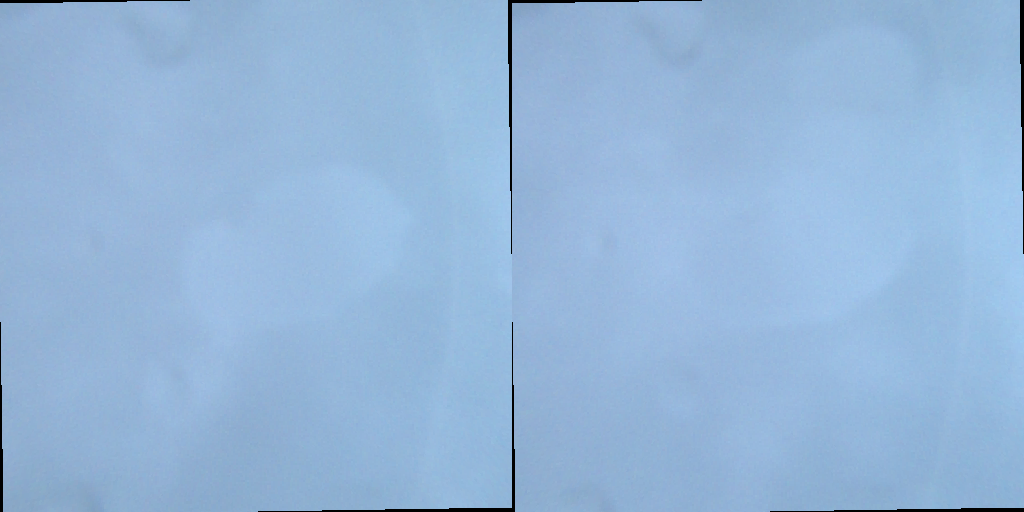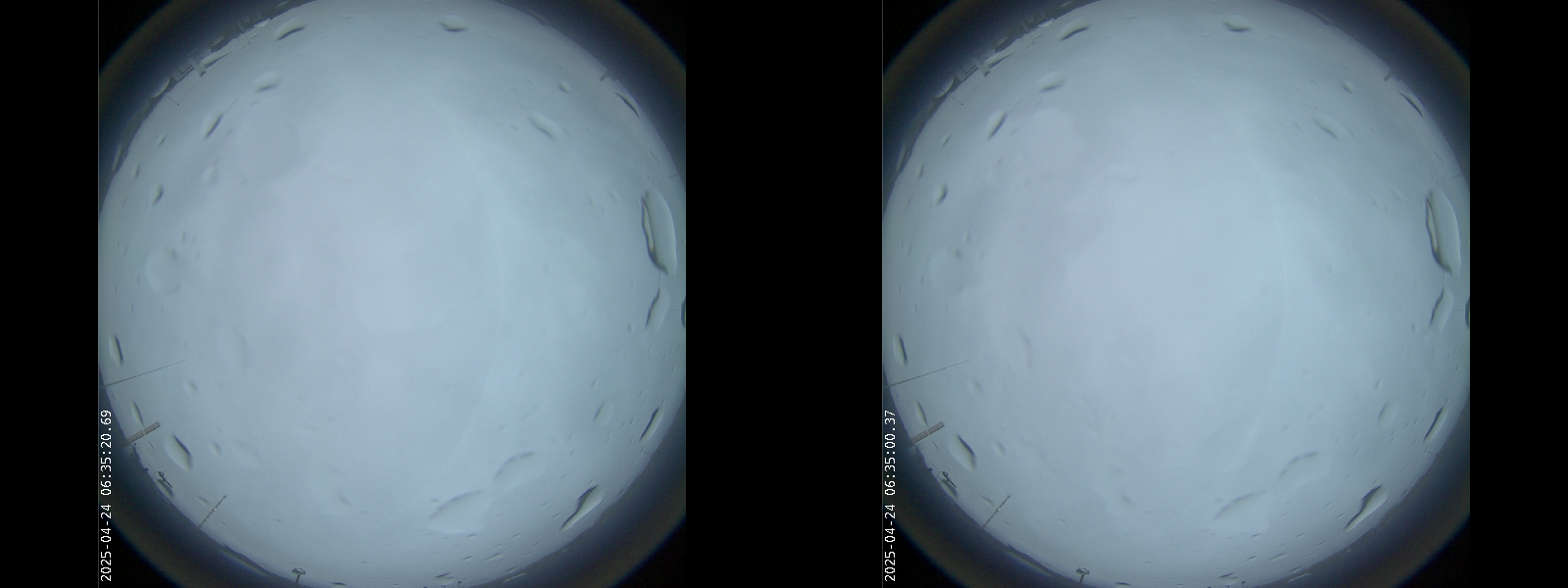Cloud motion vectors from TSI

Cloud motion vectors derived from two consecutive images.
Top: the two images (45deg around zenith, rectified),
bottom: cross-correlation between these two images as isolines (left with 0.02 spacing) and grayscale (right, black=-1, white=+1).
The maximum in the cross correlation idenditfies the shift to achieve maximum agreement between both images
The thick vector in the center of the images is derived from the whole image.
Vector field is derived from sub-images. Color indicates correlation between shifted sub image: black=low correlation, red=high correlation.
One would expect the higher the correlaton the better the quality of the cloud motion vector ...

Endpoints of all Cloud motion vectors.

Deviation of sub images shifts from overall shift as function of max correlation.


Both images rotate such that shift is on x-axis. These images should give a stereo impression when viewed by crossed-eye-method
(see e.g. here, or here.)
Click on image to try the animation and twist your eyes and brain.